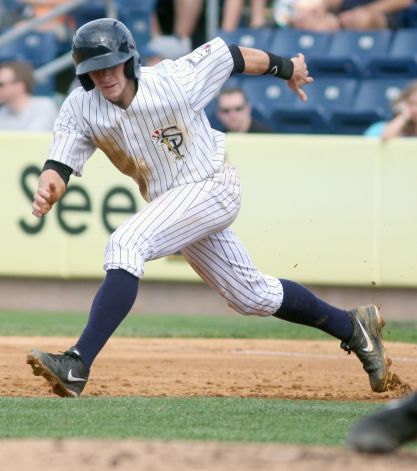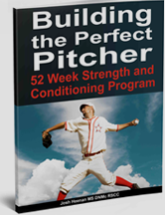Are You Ready For a College Baseball Showcase?
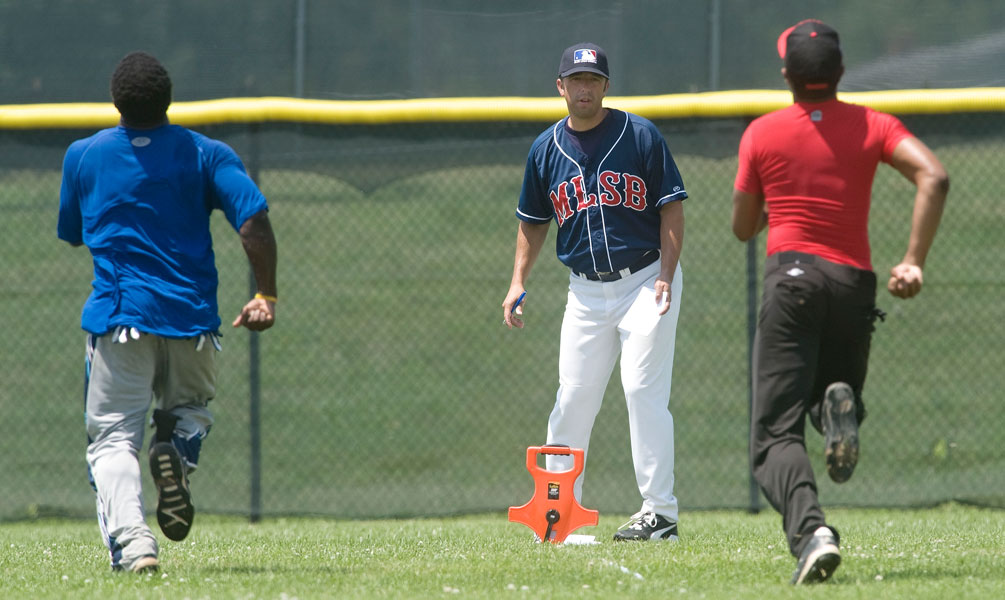
Summer time is almost here and for many high school players wishing to play college baseball this means showcase season. Showcases are a double edge sward. There are some outstanding showcases that allow you the opportunity to interact in with college coaches at schools you have interest in while getting a feel for their personality, skill set, and coaching style (yes, you are interviewing them as much as they are you). On the other end of the spectrum, there are factory style showcases that allow you and 500 other ball players just enough time to take 3 ground balls, 10 swings, and run a 60 all for the camera and then you are done for the day. Not the ideal situation for most.
I like to remind my athletes that a showcase is a job interview. A part of getting the job is absolutely how well you perform, but do you look the part? How well do you interact with the other players? What are your interactions with coaches? Do you look like you are having fun? Remember coaches are looking for people they want to have apart of their baseball family for 20-60 hours a week for 4-5 years!
ARE YOU READY FOR A SHOWCASE?
- Have you done skill work for baseball at least 2x per week outside of practice?Realize that practice is just the beginning. Routinely, our college guys take swings from 8-10pm on a Friday night. If you are not working on your skills while your competition is out partying on a regular basis you rarely have a leg up on them.
- Have you trained in the weight room at least 2x per week for the last 3-months?
If not, you are at a distinct disadvantage in regards to athletic potential and injury prevention. I believe for an athlete to even bother to go to a showcase he should have a solid 3-6 months minimum of organized training under their belt. If you don’t enjoy the process of getting better and training, you will likily not make a great college player.Check out this day in the life of a college baseball player article https://www.theodysseyonline.com/college-baseball-the-16-hour-day
- Have you recently taken a video of your 60-yard dash?I can’t tell you how many athletes tell me they run a 6.8-7.0 60-yard dash and when I ask them for a video of it they can only produce a video of them running an 8.2. Video does not lie. Get over the fact that you are not fast and figure out how to fix it.Unless you are a pitcher that throws mid 80s+ MPH or skill position guy that can legit hit the ball 400 feet, I would not recommend showing off your “skills” unless you run below a 7.5 60-yard dash.
- Have you recently taken a video of yourself… pitching, fielding, hitting?Pitchers —get on video with multiple shots at different angles— and at least one behind the backstop with a radar gun in view.Hitters —get a few views of you swinging and fielding/throwing.For all position, be honest with yourself. How athletic do you look? What do your mechanics and movements look like compared to the MLB version of you? Adjust accordingly.
- What’s your GPA?We all hear stories of guys who throw 90 MPH and rock a 2.0 GPA and he got a college scholarship, but let’s face it, you are probably not that guy— and that story was probably fabricated.Just like point #3, unless you are a pitcher throws mid 80s+ MPH or skill position guy that can legit hit the ball 400 feet, I would skip the showcase if your GPA is under a 2.5. Do yourself a favor and take summer classes to bring your GPA to that 3.0 range.Don’t think it really matters? Ask any DI program what their minimum team GPA and SAT scores need to be.
- Do you look the part?Coaches will say that looking the part is not that important as they are looking more for the skill and potential of the player but in my experience, this is incorrect. In fact, I often hear coaches state things like “look at that guy, he has obviously put in the work in the weight room” or “this kid swings well, but he needs to figure out where the kitchen is”.
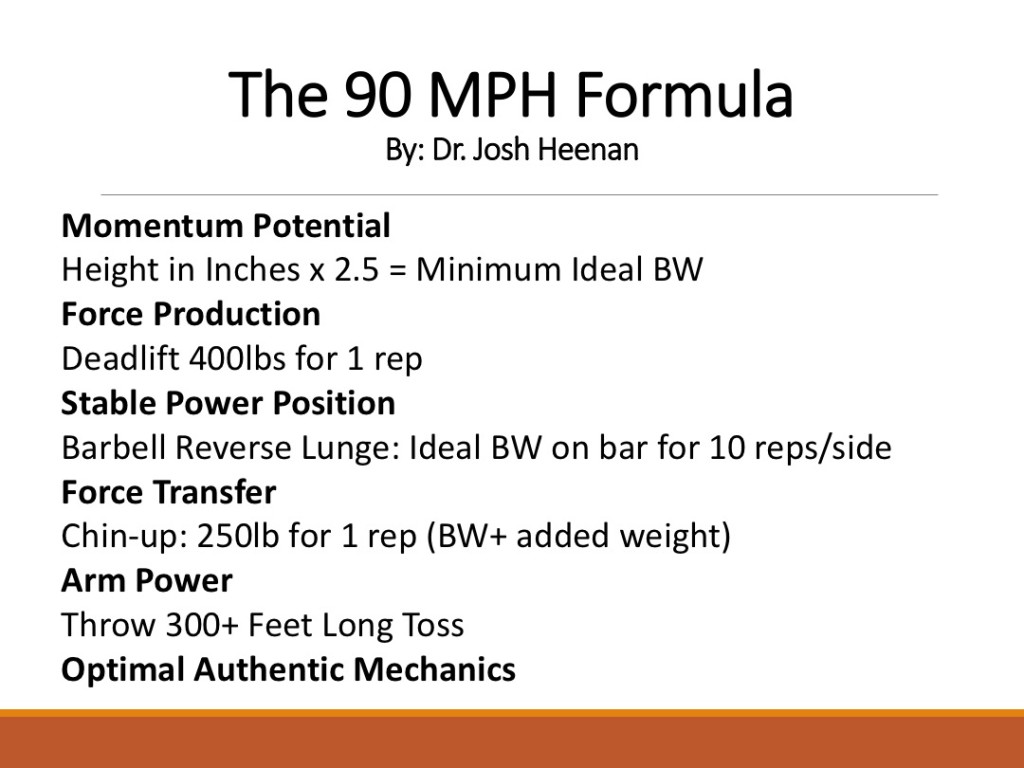 My 90 MPH formula for pitchers gives a guideline on weight I like to see our pitchers at. It get’s a little trickier for position players, but as a general rule, take your height in inches and multiple it by 2.5 and that is a good baseline for most athletes to start “looking the part”.
My 90 MPH formula for pitchers gives a guideline on weight I like to see our pitchers at. It get’s a little trickier for position players, but as a general rule, take your height in inches and multiple it by 2.5 and that is a good baseline for most athletes to start “looking the part”.
What other aspects do you think are important at your showcase? Where do you think you are lacking the most?
Leave your feedback below in the comments and I will gladly reply.
From No Offers to DI Baseball Player
I can’t get recruited
I get overlooked
My son doesn’t get fair playing time
They are prejudice because I’m too… short, skinny, slow, etc.
These are phrases we hear all the time.
The “I get over looked… I can’t… my coach…” garbage is just that, garbage. When presented with athletes or families that come saying those phrases we try to change word choice and outlook from day one. Many think they are going to be the next Bryce Harper, but let’s face it, the odds are highly against you.
To be fair, we are lucky to have many amazing athletes and families that are supportive and realistic with where they currently are and where they need to go to reach their goals.
Enter Tom Henderson
After working a showcase with Wayne Mazzoni, he suggested I reached out to Tom as he was a LHP senior in high school with good arm action, good grades, but just needed to get bigger and stronger to have a chance at the next level.
Tom was a whopping 135 lbs at 6’2″ with strength to match his frame— practically none.

Completely out of his comfort zone, Tom came to train 3-4x a week for the next 12 weeks along side pro, college, and signed high school ball players. Being able to do only 1 push-up on day one is pretty humbling when you have athletes tossing around 100lb dumbbells or 14-year olds doing 20 push-ups in a set.
But bust his butt day in and day out he did
After about 2 weeks we sat down and had our nutritional talk. We evaluated where he currently was with his eating and created a plan on how to add some serious size to his frame over the next 12 weeks. We implemented simple weekly check-ins to monitor progress, but attached some deterrents for each missed a weigh-in.
Tom soon felt what it was like to be truly “full”. The first weekly weigh-in he was up 5 lbs. Second week, another 4. Third week, another 4. For those 12 weeks, Tom treated eating like it was a full time job.
Those 12 weeks passed without a missed weigh-in and Tom was now tipping the scales at 170lbs. Along with his new found weight, his strength gains were impressive to say the least. Push-ups had become relatively easy and his deadlift was up over 100 lbs. Most importantly, Tom’s velocity on the mound had jumped.
Prior to his weight gain adventure, I promised Tom if he put in the work, I would vouch for him at his #1 prospective school, Marist College. Upon speaking with the coach I realized they had no more roster spots for the following year. Without any hesitation, Tom said he would end up going there when he was accepted and walk on. Little did he know that 6 weeks later I would get a call from that coach stating they just cut a handful of guys from there program and wanted to extend a roster spot for Tom for the coming year.
Fast forward to today
Tom is now a role player for his DI program and touts a .077 batting average against. Currently sitting at 185lbs with a fastball that nearly tops the 90mph mark. With a frame that can still handle adding another 30-40lbs and project him to add another 5-10 mph on his fastball and 3 more years of eligibility, Tom has a lot to look forward to.
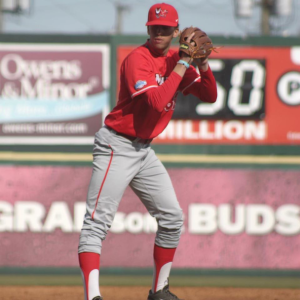
Without Josh’s expertise and connections I would not have had the opportunity to play baseball at Marist College. Josh, along with his terrific staff, have pushed me for two years, and have helped me gain a total of 60 lbs, 35 of those in my first 12 weeks of training. This weight has taken stress of my elbow and shoulder while allowing me to increase my velocity by upwards of 10 MPH, nearing 90 MPH. The key to our training is the focus on muscles and movements that put by body in better positions on the mound, which directly correlates to what you need to continue to succeed and play at the next level.
Are these the type of results you are looking for?
Email me for more information about our remote programming platform, go to https://advancedtherapyperformance.com/90mphformula/
12-Week Weight Gain Coaching For Baseball Players
12-weeks ago a group of readers started my private distance weight gain program. After an initial evaluation, movement screen, and goal setting we proceeded with both a training and nutritional plan for each athlete.
The groups average results were:
-20lbs of bodyweight gained
-100+ lbs added to their front squat
-125+ lbs added to their deadlift
-10+ reps added to their chin-ups
I couldn’t be more proud of these athletes (and families!) for making the short term sacrifice of eating a large amount of food and truly dedicating themselves to hard training.
Although we do have one problem
I promised the person with the most dramatic transformation to receive a full refund for their hard work. After much deliberation with my colleagues, we have not been able to determine a winner, so I am enlisting you, my readers to help choose a winner.
Please Vote Below– Voting Ends Friday February 5th at Midnight!
Brad
Today I weight 221, a total weight gain of 23lbs. I have been consistent with weight training throughout the entire 12 weeks. I was able to do a dead lift of 255 as of the end of my weight training. Before I started this training, the most I was attempting was 135. When I started I was doing about 4 or 5 chin ups, now I can do 12. Since baseball practice started I have gone out and am only throwing about 70% effort and my coach noticed I’m throwing harder than last year. When I was pitching I was able to get 8 batters out in 25 pitches at practice. The most important thing is that a college coach I’m talking to noticed the big change in my size since I went to their training camp in the summer and they asked me to throw a “tryout” bullpen at the college next week. Each week I followed your advice and I never had a hard time reaching the weight goals; I was usually ahead of schedule. My goal was to get to 220 and I reached that with 2 weeks to go to the end of the weight program.
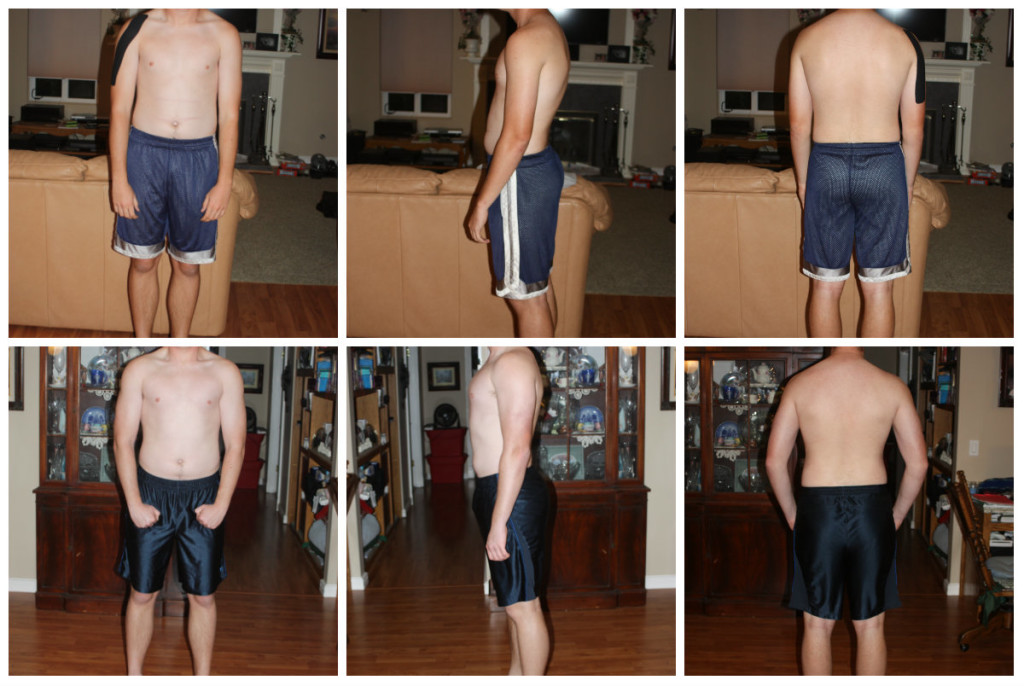
Garrett
First off, thanks for making my money well spent whether or not Garrett wins the contest. I can tell a difference as well as many friends and family.
Though he didn’t meet the full expectations; we offer the following results:
Total weight gain – 139lb to 159lb
Squats – 135lb to 200lb
Chin-ups – 6 to 25
Pushups – 30 to 70
Dumbbell incline press – 30 lb to 60lb
these are all his working weights, not max outs. – Garrett’s Father
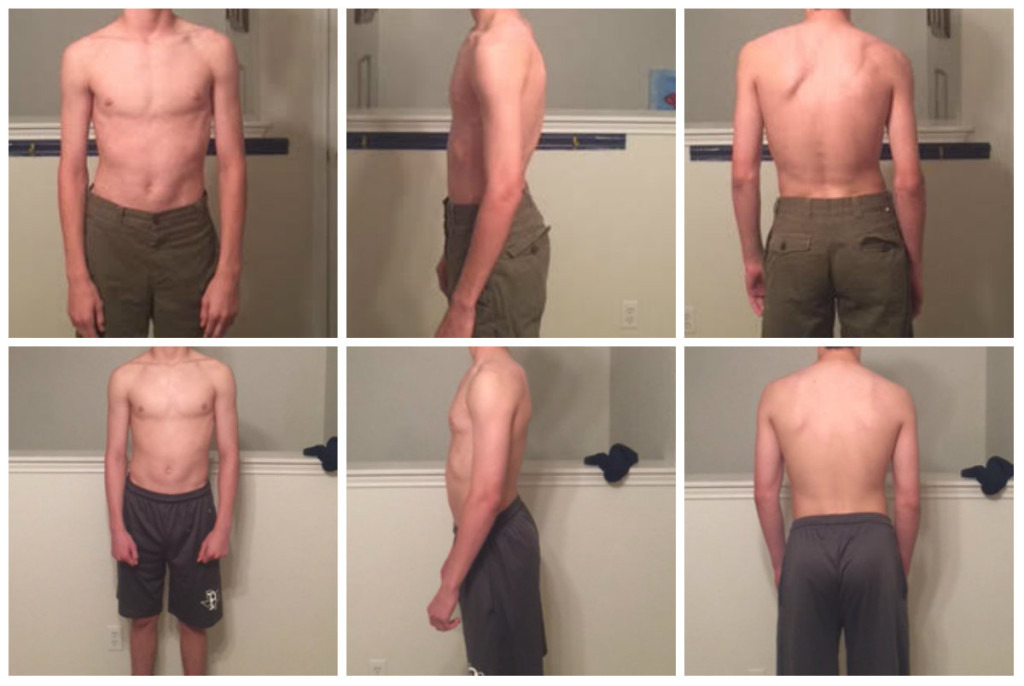
Keanu
My current weight is 171.8 after starting off on an even 148. Being up almost 24 lbs seems huge for 12-weeks worth of work. Strength wise I’ve been noticing major increases in each and every workout, but I haven’t been keeping track of how much exactly except in certain workouts like my rows being up 30 lbs and my deadlift going up 150+ lbs with a max that’s just shy of 200 lbs more than when I first started the program.
This whole experience has been very critical to me in not only playing baseball going forward, but in life because I always wanted to become a bigger person and weighing 150 on a good day wasn’t going to get me anywhere I wanted to go. I wish I could be gained more in this 3 month span, but I’ve learned a lot about how much I need to eat, on top of taking protein and creatine consistently. This definitely won’t be the end of my quest to gain muscle mass and I will without a doubt take what I have learned and incorporate it into my everyday life to become a stronger and better baseball player. Thank you for this opportunity, Josh.

Alex Farina Signs with Milwaukee Brewers
On August 2nd 2013, I made the following post on facebook:
As I mentioned in that post, Alex is the type of client that makes me look great. Simply put, my job is to keep our athletes healthy and progressing while providing guidance wherever needed. For an athlete like Alex who shows up early, stays late, listens, asks well thought out questions, is process oriented, and consistent– he will be successful no matter what he puts his mind to.
Alex spent the summer entering his junior year of college split between the New England Collegiate Baseball League and the Cape Cod Baseball League. Having MLB scouts show interest there was some talk of getting drafted junior year, but to be honest, coming from a program with 3 draft picks in the last 34 years, it was a long shot and not expected.
Eventually, the draft came and went without a call and he reported back to the NECBL for the summer. During that time we spoke openly about how the next 12 months were going to go. The primary goal was to graduate on time with his mechanical engineering degree and play affiliated pro-ball whether or not he was drafted.
Speeding up to present time, Alex earned his degree and got the call he was waiting for from the Brewers and as I write this he is on a plane to their Arizona Rookie Ball affiliate. A well-earned opportunity for someone who dedicated themselves to taking one step at a time, staying focused, and never excepting anything less than being better than yesterday. That is how big goals are accomplished and dreams are realized.
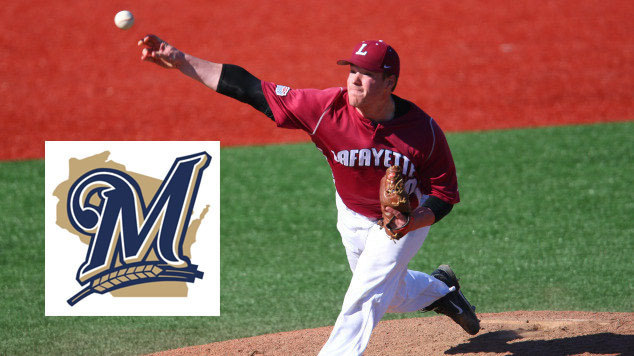
Add Muscle Mass, Get Recruited and Drafted
With the rigorous in-season schedule of games, practice, school, and life adding lean muscle mass can be very challenging. Add in distance running, hot weather, and a lack of training it can feel impossible to maintain bodyweight, let alone add some clean LBS to a wiry frame.
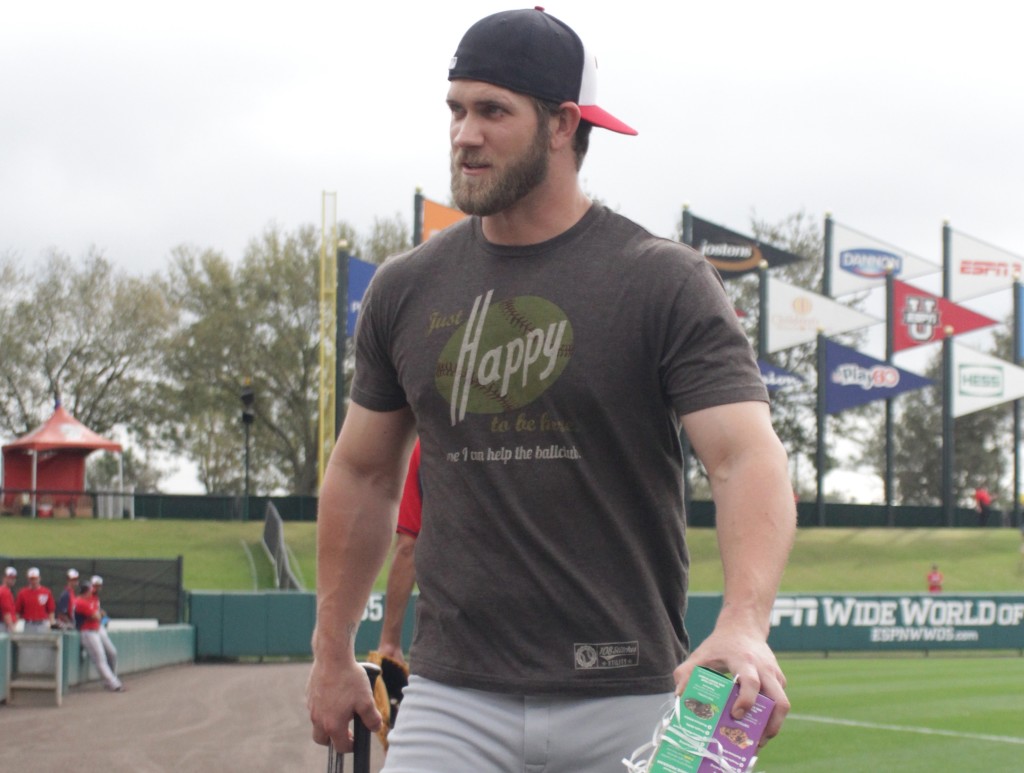
Why is muscle mass so important?
Muscle mass and increased bodyweight increases potential force output, which is one of the keys when trying to run faster and throw harder. Not only is added muscle mass important for injury prevention, but it terms of health and longevity there are few indicators better than muscle mass.
I held a webinar last year and release my “90 MPH Formula”. As you can see below, I’m a huge believer that strength gains and bodyweight are near necessity to throwing above 90. Mechanics and a whole host of factors play into this, but my athletes have shown me the information listed is accurate over and over again.

I encourage you to compare your favorite collegiate or MLB team roster to the “90 MPH Formula”.
The performance indicators and decreased risk of injury are great for athletes, but why else would this matter for collegiate coaches and MLB organizations?
Dedication/Toughness
For the most athletes, adding a significant amount of muscle mass requires intense dedication. Having seen 100+ athletes add 20 lbs in 10 weeks, I know this is not for the faint of heart. The ones who go on to add 30-40 lbs over a 6 month period have a level of need for the weight and self-discipline that is impressive to say the least. Dedication, toughness, and sacrifice for a larger goal (like significant muscle gain) is something all highly competitive teams want.
Projectable/Image
Baseball, like most sports, is highly speculative. As I tell our draft eligible guys, all it takes is one scout to fall in love with you and you will be picked up. Same holds true for college coaches. Being undersized by 30-50lbs while being scouted or recruited is going to portray a less than ideal image of what you can offer, even if you are an exceptional athlete. As one of my good friends often says “dress for the job you want, not the job you have” prior to your college visits or your draft eligibility it is important to present yourself physically prepared for that next level of play. Leverage your opportunity to have those coaches speculate you are the hardest worker they have ever met.
During the first day of the MLB draft coverage, the hosts continually commented about how a bunch of the athletes were “gym rats”. They classified these guys as “workers” and would be an asset to each ball club they were about to join. Many college and pro organizations see the value of athletes who train hard, are more durable, and reach their potentials. Take the time now to dedicate yourself to being consistent while training hard and smart year-round.
Why Your Recruiting Sucks
(I stole the title of this article)
I love my job. Anyone who has met me knows this within the first 5 minutes of talking. It’s my love and passion; along with the fact I have amazing athletes that are hard working and extremely dedicated.
Most of my clients play or end up playing a reasonably high level of baseball in college. For many of these young men, it’s been a dream since they were in 7th grade being able to play ball in college.
The unfortunate fact is that many athletes come home from their first semester of college hating the coaches, team, and school. Check out this text I received yesterday from one of my athletes.
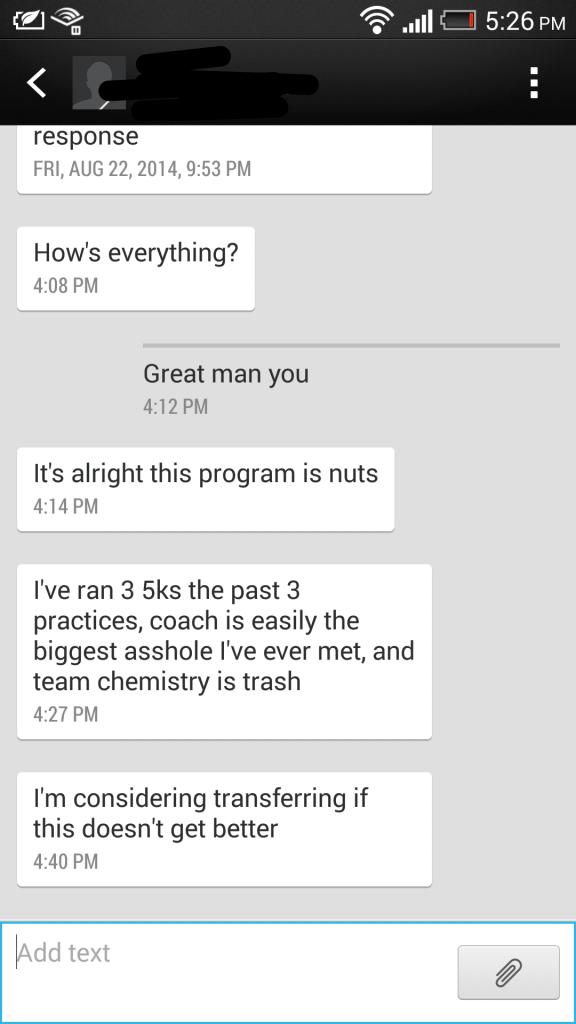
Picking a college can be a very tough process regardless of how good at baseball you are. Making a decision to leave (or stay) home for college is tough enough, without adding in academics, baseball, scholarships, etc.
This week alone I have received dozens of emails about recruiting. To each of these messages, I send them to my buddy Wayne Mazzoni’s website. Having known and worked with Wayne for close to 10 years, I know he always is honest and direct with anyone I have sent his way (check out his post Recruiting Sucks & Your Recruiting Sucks. Sorry…Had To Say It).
The sad part about the text I received is the situation could have been avoided (like most!). Looking deeper into the program you may enter goes outside field and classroom these days. Understanding that jumping into a program that conditions their athletes like cross country runner is going to DECREASE muscle mass, strength, size, and power while INCREASE risk of injury. A terrible decision if you wish to play ball after college.
So what are you to do?!
Get educated, ask questions, have an advisor or mentor to help you through the process. Many of our collegiate and pro athletes mentor younger athletes and act as a great soundboard when questions arise.
For more free info check out Wayne’s blog. www.waynemazzoni.com
Have questions about recruiting? Ask below in the comments section.
Moore Southport 2014 Pro, College, and High School Baseball Commits
As we get prepared to kick start the baseball season I wanted to list some of our athletes that are committed in ink for this season and the fall. Many more to come, but here is the short list.
Professional


College
Ryan Crawford- Hamilton College
Victor D’Ascenzo- Lafayette College

Pete Detrik- Springfield College
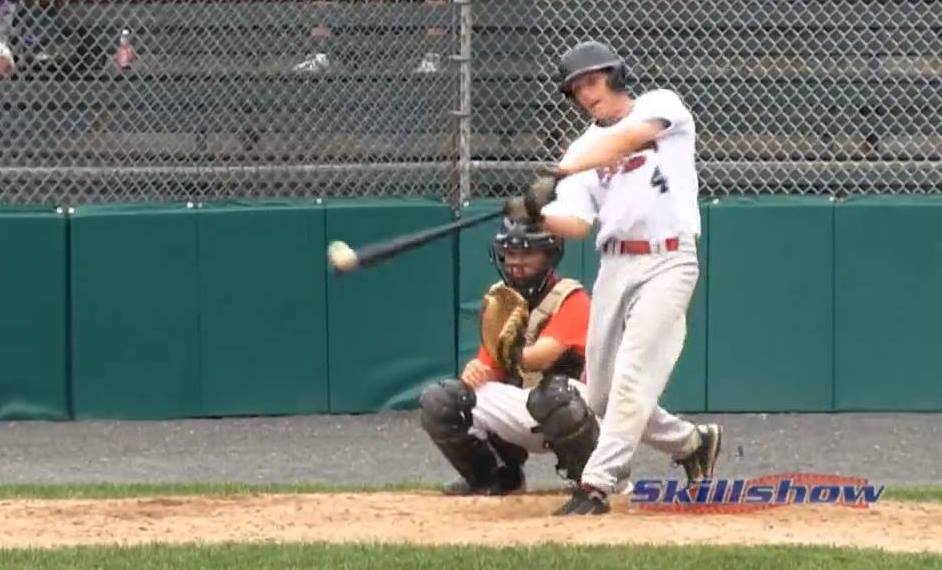
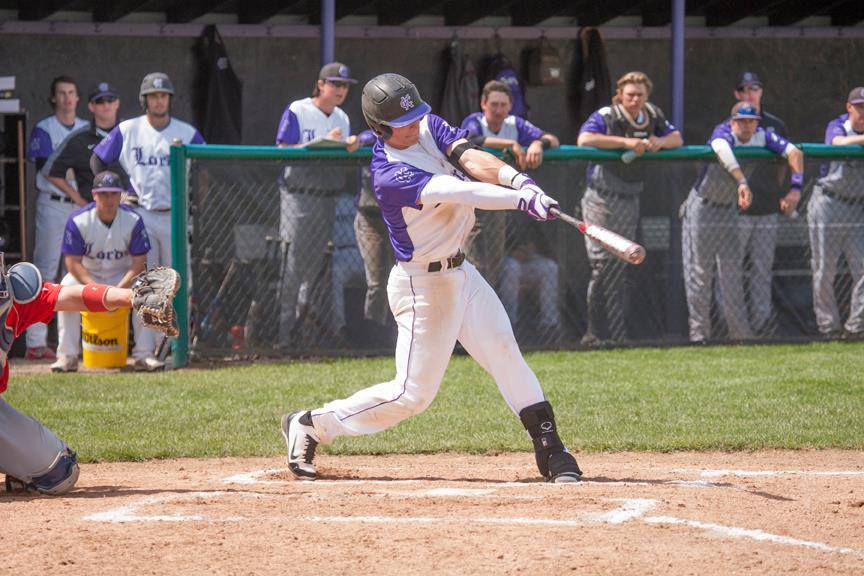
Alex Farina- Lafayette College
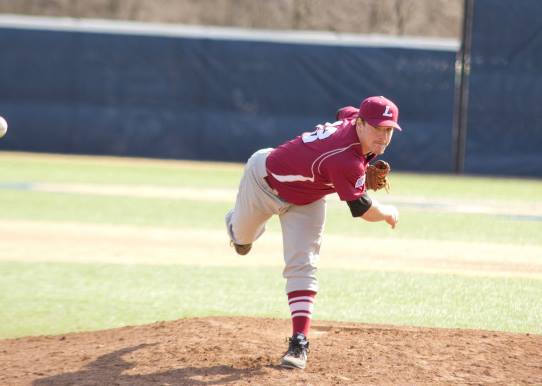
Henry Milano- Dickinson College
High School
Mike Arman- Central Connecticut State University
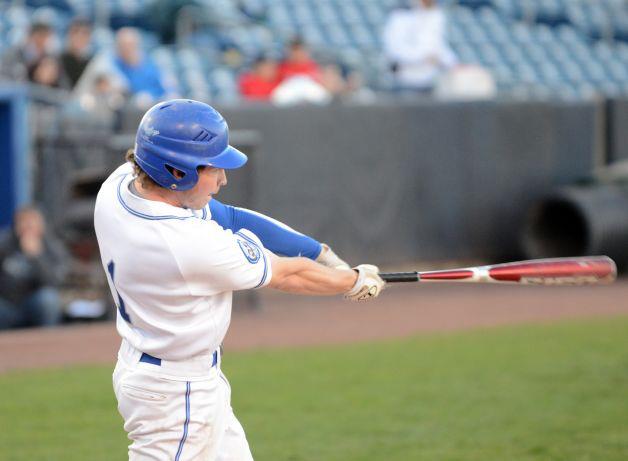
Mike Foley- University of Rhode Island
JT Hintzen- Sewanee: The University of the South
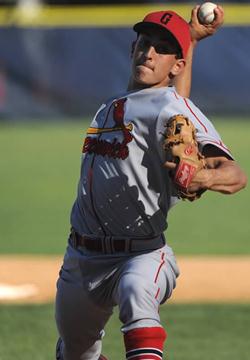
Willie Rios- University of Maryland

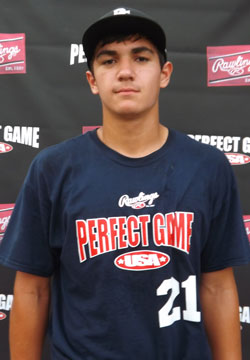
Portraits: NY Yankees John Murphy
The All In Productions crew produced a great feature on one of our athletes, John Murphy. Take a moment and see what makes this athlete motivated to make the show.
Scribner Documentry
The past few months have been very busy at Moore, thus the lack of posting here. A few of my athletes have been featured recently with some very cool documentaries. Most recently, Troy and his brother Evan. Happy Holidays and enjoy the video!
Portraits : The Scribner Brothers from Manuel A. Santiago
The 60-Yard Dash: A Case Study
The 60-yard dash is often one of the first quantitative tests scouts at both the college and professional levels wish to see performed well.
This test has been deeply engrained into the dogma of baseball, while science and many coaches believe that there are better options. The 60-yard dash tests acceleration, top speed, and maintenance of top speed over 180 total feet. In general, baseball is a sport of acceleration and deceleration, not top speed. Regardless of it’s applicability many coaches and scouts use it as a gauge of athleticism and should at least be a consideration for athletes wanting to been seen as competitive. Here’s a case study to show how we address improving speed.
As an incoming freshman shortstop at Sacred Heart University, John Murphy had a 7-7.1 60-yard dash. With a front squat max of 245 and a vertical jump of 25 inches his power and strength was considered average to below average for SHU’s program.
My favorite test for both power and asymmetries is the single leg triple jump (SLTJ). The test is performed by standing on one leg and making 3 consecutive broad jumps on the same side while remaining in control. The goal is to jump as far away from the starting point while sticking each landing. When there is a side-to-side discrepancy of over a foot I investigate deeper to see if we are dealing with strength deficit or something more structurally.
Scoring an average of 21 feet on each side puts John right in the middle of a team average of 22, nothing special to say the least. The ability to apply force into the ground and accelerate your body forward gives us a nice picture of single leg power and a large carryover to running.
As you can see in the chart, as the years progressed, John’s squat, single leg triple jump, vertical jump, and front squat to bodyweight ratio make improvements every year. Increasing relative strength compared to bodyweight and teaching how to increase force production once movement dysfunctions are addressed will consistently increase speed— more importantly acceleration.
An interesting fact to note when looking at the data is that John’s junior year is when he really took his diet to the next level. When dealing with athletes of all levels it clicks at different times. Sometimes this has to do with whom they spend the majority of their time with and sometimes it just takes time to see the light at the end of the tunnel with a goal. Either way, John honed in on his diet by adding about 10 lbs of muscle and dropping a few of fat, again increasing his potential to produce force and become faster.
By John’s senior campaign he had been clocked as low as 6.5 in his 60 and was easily the most powerful athlete in his program. Looking back at his freshman year 21 foot triple jump (7 feet per jump) and increasing it to 26 feet (~8 ½ feet per jump) is a very large difference. This effectively lengthens his stride without changing his mechanics and drops 3-5 strides or ground contacts during his 60-yard dash, dramatically decreasing his time to plus speed in the eyes of MLB organizations.
When training athletes, strength coaches often forget the goal of athletic performance. Our job in the weight room is to help minimize or prevent injury, increase movement efficiency, increase overall strength, and increase force production in a way that it relates to our athlete’s events. You can see we did not test vertical jumps in 2012 because after the past 6 years I have come to realize that the carry over to baseball or other athletic development is much larger with the triple jump gave me lots of qualitative and quantitative data to use in our programming compared to vertical jump data.
Tips to Increase Acceleration Speed
-Video tape and practice your 10-yard dash. Use the video to get your current time and work to improve it. Once your 10-yard dash goes down, your 60 will drop dramatically.
-Increase your front squat max to 1.7-2x bodyweight with solid depth.
-Minimize fat mass and optimize muscle mass. Murph has had his bodyfat as low as 4.5%. By carrying minimal fat mass all weight is functionally producing force.




